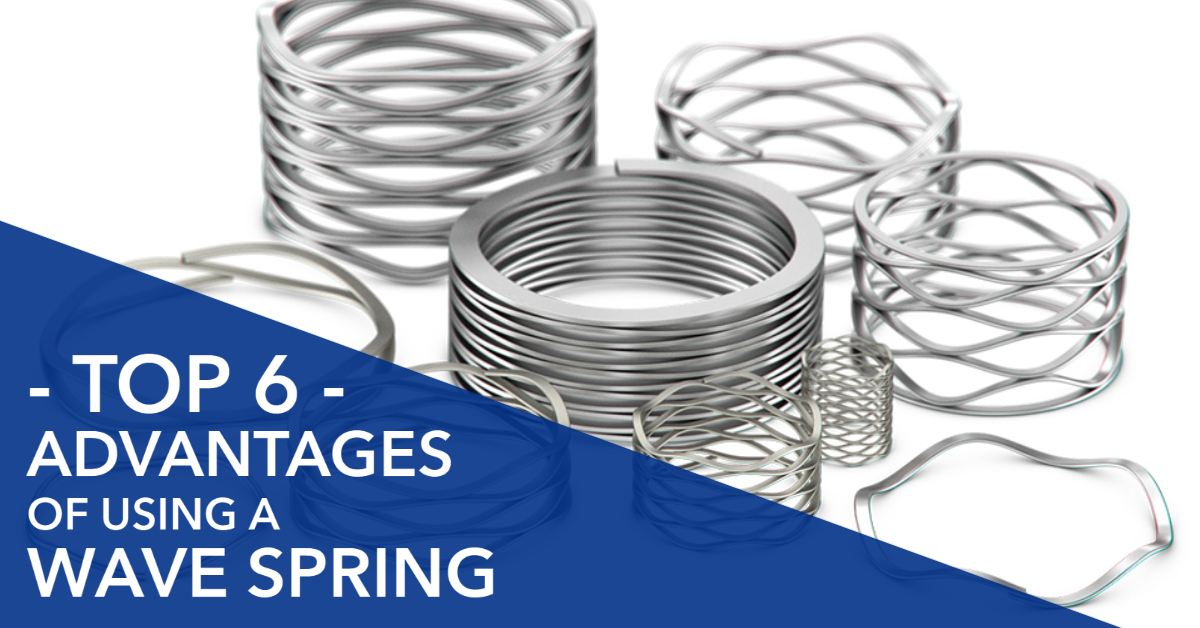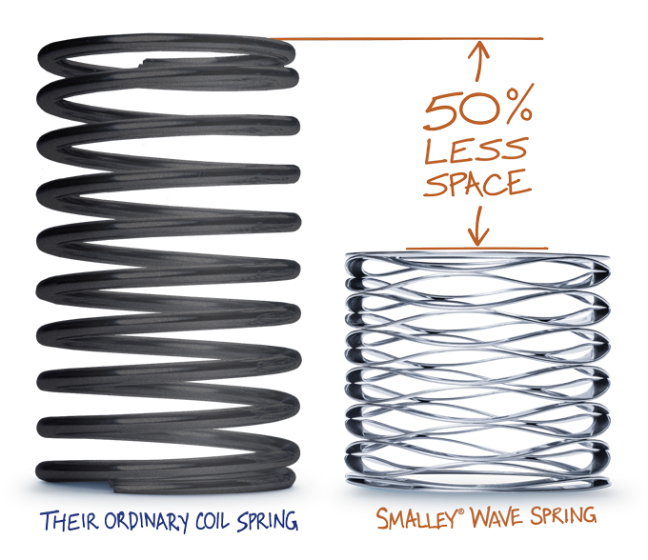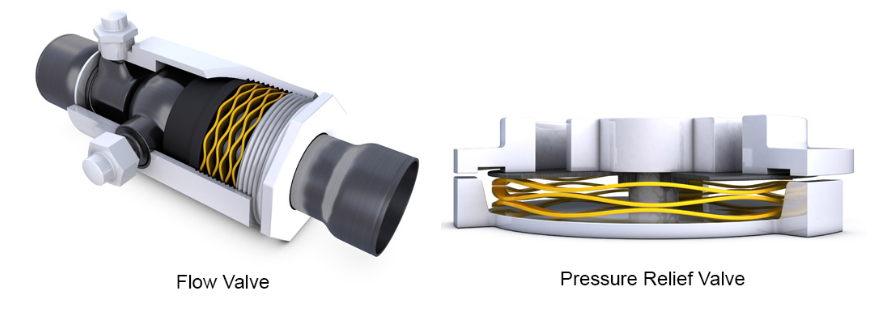

Do you have trouble finding a spring that fits in your application? Coil springs require large travel, making your application design less than optimal.
Wave washers, coil springs, disc springs, the list goes on – these are all traditional springs that work well in many engineering applications.
What if there was a more compact, light-weight design?
Whether you have space constraints, need more design flexibility, or are looking to meet a specific load requirement, adding a Smalley wave spring to your design toolkit can open up a world of new design possibilities. Knowing when to use a wave spring and understanding the value it brings can take your designs to the next level.
So when should you use a wave spring? Below are the top 6 advantages of using a wave spring.
Top 6 Reasons to Use a Wave Spring
- REDUCE AXIAL SPACESpring operating height can be reduced by up to 50%.In applications with tight space constraints, Crest-to-Crest wave springs optimize space concerns. The ‘multiple waves per turn’ design can offer the same spring force as a traditional coil spring, but at a reduced operating height. A reduction in operating height also decreases the spring cavity, yielding an overall smaller assembly size. Significant cost savings may be seen with a smaller, more light-weight assembly, as it takes less time and material to produce.

- DESIGN FLEXIBILITYQuick and economical customization with Smalley’s No-Tooling-Cost™ edgewinding manufacturing process.We can customize wave springs to fit your exact application requirements. The number of turns, end type, material type, and thickness are just a few parameters we can customize.
Our ability to accommodate virtually any design comes from our unique edgewinding process, where we take flat wire and then coil it on edge. With the freedom to coil to nearly any diameter (0.157 – 120 in.; 4 – 3000 mm), we can efficiently optimize your design, all without the need for additional tooling.
- ACCURATE AND PREDICTABLE LOADS WHERE YOU NEED ITAccurate and predictable loads are achieved by putting a tolerance on load(s) at specific working height(s).Whether it’s a static or a dynamic application, you’re able to pinpoint the load that a wave spring outputs. This is because we tolerance critical load(s) at specified working height(s), so you can expect reliable, consistent performance in your application.

- VERSATILITYWave spring technology is the trusted solution across many different industries and applications.From small to large diameters, light to heavy-duty parts, carbon steel to exotic materials, wave springs has been the trusted solution for tens of thousands of applications. From everyday consumer products like the smartwatch on your wrist, or the coffee maker in your kitchen, to an oil well deep under the Earth’s surface, to as high as, well, Mars, there is virtually no limit for wave springs. Below are some examples of common applications that utilize the benefits of a wave spring.
Flow Valves: As fluid pressure increases, a Crest-to-Crest Wave Spring precisely controls the linear displacement of the piston.
Pressure Relief Valves: Air pressure under the assembly causes the spring load to increase, which forces the plate away from the sealing surface and provides a pressure relief mechanism. As pressure decreases, the spring returns to its original work height, allowing the unit to seal again.
Face Seals: The wave spring applies pressure to precisely load against a mating surface, properly sealing fluids.
Vibration Isolators: Under constant loading, the isolator dampens vibration from equipment operation. Wave springs are used to provide precise and predictable loading.

- EXOTIC ALLOYSExotic alloys are an option for your applications in extreme environments.There are a variety of key factors when it comes to choosing the right material for your application, including environment, budget, and cycle life. Using a material that is not optimized for the environment that it’s in can lead to performance issues and decreased application life. If our carbon and 17-7 stainless steels do not meet your application’s unique requirements, we offer a variety of custom materials.
From cryogenic to high temperatures, magnetically-sensitive to electrically conductive, deep-sea to outer space, our engineering team will tailor a wave spring fit for optimal performance.
- FREE SAMPLES & ECONOMICAL PROTOTYPESWe know it’s important to ensure fit and function with prototype testing, so we offer free samples of our standards.We also offer custom, economical prototypes that can be delivered to you in a short lead time with no minimum order quantity. This is a unique benefit of our edgewinding process, as traditional stamped parts have high up-front tooling costs, minimum order quantities, and traditionally longer lead times.
Get Started
In applications with tight space constraints, Smalley wave springs are the ideal solution. Choose from over 4,000 carbon steel and stainless steel wave springs in stock, or explore a custom design with No-Tooling- Costs™. Get started with a Smalley engineer today and request a free sample to add to your design tool kit.
Interested in learning more about wave springs?
Check out our new E-Book below.
Summary Infographic


